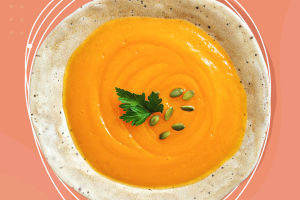Coffee beans are the seeds of a fruit called a coffee cherry. Coffee cherries grow on coffee trees from a genus of plants called Coffea. There are a wide variety of species of coffee plants, ranging from shrubs to trees.
•Type of bean.
There are two main types of coffee species, Arabica and Robusta. Arabica originates from Ethiopia and produces a mild, flavorful tasting coffee. It is the most popular type worldwide. However, it is expensive to grow because the Arabica plant is sensitive to the environment, requiring shade, humidity, and steady temperatures between 60-75 degrees Fahrenheit. The Robusta coffee plant is more economical to grow because it is resistant to disease and survives in a wider range of temperatures between 65-97 degrees Fahrenheit. It can also withstand harsh climate changes such as variations in rainfall and strong sunlight.
• Type of roast. Coffee beans start out green. They are roasted at a high heat to produce a chemical change that releases the rich aroma and flavor that we associate with coffee. They are then cooled and ground for brewing. Roasting levels range from light to medium to dark. The lighter the roast, the lighter the color and roasted flavor and the higher its acidity. Dark roasts produce a black bean with little acidity and a bitter roasted flavor. The popular French roast is medium-dark.
• Type of grind.
A medium grind is the most common and used for automatic drip coffee makers. A fine grind is used for deeper flavors like espresso, which releases the oils, and a coarse grind is used in coffee presses.
• Decaffeinated coffee. This is an option for those who experience unpleasant side effects from caffeine. The two most common methods used to remove caffeine from coffee is to apply chemical solvents (methylene chloride or ethyl acetate) or carbon dioxide gas. Both are applied to steamed or soaked beans, which are then allowed to dry. The solvents bind to caffeine and both evaporate when the beans are rinsed and/or dried. According to U.S. regulations, at least 97% of the caffeine must be removed to carry the decaffeinated label, so there may be trace residual amounts of caffeine. Both methods may cause some loss of flavor as other naturally occurring chemicals in coffee beans that impart their unique flavor and scent may be destroyed during processing.
•Place beans or ground coffee in an airtight opaque container at room temperature away from sunlight. Inside a cool dark cabinet would be ideal. Exposure to moisture, air, heat, and light can strip coffee of its flavor. Coffee packaging does not preserve the coffee well for extended periods, so transfer larger amounts of coffee to airtight containers.
•Coffee can be frozen if stored in a very airtight container. Exposure to even small amounts of air in the freezer can lead to freezer burn.
Follow directions on the coffee package and coffee machine, but generally the ratio is 1-2 tablespoons of ground coffee per 6 ounces of water.
For optimal coffee flavor, drink soon after brewing. The beverage will lose flavor with time.
Use ground coffee within a few days and whole beans within two weeks.
Did You Know?
It is a myth that darker roasts contain a higher level of caffeine than lighter roasts. Lighter roasts actually have a slightly higher concentration!
Coffee grinds should not be brewed more than once. Brewed grinds taste bitter and may no longer produce a pleasant coffee flavor.
While water is always the best choice for quenching your thirst, coffee can count towards our daily fluid goals. Although caffeine has a mild diuretic effect, it is offset by the total amount of fluid from the coffee.
The difference between coffee and brewed coffee?
Where espresso uses pressure to force hot water through finely ground coffee, brewed coffee involves pouring hot water over fresh coffee grounds (a pour-over method), or adding fresh coffee grounds into hot water (immersion brewing).


